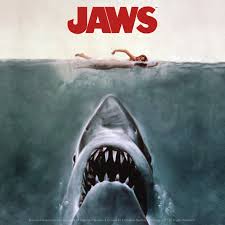Why Blockbusters Shouldn’t be Afraid of Scheduling out of Summer

With August officially winding down, the 2014 summer movie season is just about in the books. Barring an enormous opening from The November Man or As Above/So Below (unlikely), Guardians of the Galaxy and Teenage Mutant Ninja Turtles are the last fireworks of a summer plagued by low attendance, which has resulted in the lowest box office total for a summer since 2005. Overall, there is one takeaway from this season that is abundantly clear: blockbusters can indeed succeed outside of the typical timespan of May through July. By scattering big budget blockbusters more evenly throughout the calendar year, not only can box office numbers increase, but movie-going will be an overall more enjoyable experience going forward.
The cluster of similar films that populate the summer landscape causes problems for both studios and audiences. With comic book movies, large-scale action pictures, and other big budget films premiering in theaters within short weeks of each other, it leaves minimal room for sky-high box office growth because conflicts of interest occur among movie-goers. For example, The Amazing Spider-Man 2 opened the summer season during the first weekend of May, followed by Godzilla two weeks later, X-Men: Days of Future Past the week after and Maleficent during the final week. On a surface level this clutter seems disadvantageous, but money was still made. However, while each of these films is a proven financial success, all failed to reach their full box office potential due to an incredibly packed schedule.
Of all films to open with over $90 million during the first weekend, every single one has gone on to gross over $230 million domestically, except for The Amazing Spider-Man 2 and Godzilla. Both spent the duration of their theatrical run scratching and crawling their way just past the $200 million domestic mark. Neither X-Men nor Maleficent even crossed $250 million, despite large openings and solid word of mouth. Studios became blind to the amount of room that was available throughout March, April, June, July and August. Instead, they fell victim to the perception that releasing a big budget movie in May was the best strategy to implement.

This year, two films are prime examples as to why May through July isn’t the only time of the year that guarantees success for big budget movies. Captain America: The Winter Soldier and Guardians of the Galaxy were released during April and August, respectively, thus showing that non-traditional time periods can also breed financial success. The Captain America sequel is currently the highest grossing film of the year while Guardians is already the highest grossing film of the summer and well on its way to surpassing Cap as the highest grosser of the year. Ultimately, if a blockbuster possesses a strong marketing presence, along with high quality, it will undoubtedly make money, no matter when it is released. Going even further back in time for another example, March 2010 saw the release of The Hunger Games and Alice in Wonderland, with the former amassing $152 million its opening weekend and the latter $116 million. For a month not particularly known for opening many tentpole films, those two films proved the potential of moving to a more barren release landscape.
Since the release of Jaws, summer releases have capitalized on the ideals of the season. Kids have time off school and are usually looking for something to do, while most family vacations occur from May through July. The weather is warmer, the beaches look better, and having a good time is at the forefront of everyone’s mind. It is because of these ideals that most summer blockbusters are molded in the same way. Explosions, excitement, action, and humor are the traits that are (or at least try to be) prevalent throughout all these films. A sillier comparison can be made to the relationship between ice cream and hot weather versus hot chocolate and cold weather; both peak during certain times of the year, but that doesn’t mean that they don’t have success outside of their peak season.
The winter, spring, and fall are notoriously empty with big budget spectacles, yet certain films have shown that success is certainty attainable. Since 2004, only eight films have grossed over $200 million domestically during the spring (defined by Box Office Mojo as the first weekend in March through the last weekend in April). This number is more miniscule when considering the fall season (Labor Day weekend through the end of October); only one film since 2004—Gravity—has ever climbed beyond $200 million during that time, and no film even surpassed $170 million. During the winter (weekend after New Year’s through the end February), two films accumulated over $180 million domestically: The Lego Movie and The Passion of the Christ. If spring is known as a barren wasteland for tentpole releases, then the fall and winter are even more desolate.

These numbers don’t necessarily suggest failure for big budget films; instead they highlight just how few (quality) films actually take the leap of faith into uncharted territory with full support from studios. The problem is that there is so much focus during the summer months on the films generating the most money, while the fall is spent promoting lower-scale dramatic fare (with the occasional big budget movie) before taking the winter to bask in the glow of awards season, and finally taking it easy through the spring while gearing up for the cycle to start back over in the summer. This isn’t a system that is broken, it’s been working fine since the summer blockbuster became a phenomenon with the release of Jaws in 1975. However, if the (ideal) goal of business is to maximize profit while also providing customers with the best possible product, then studios should look at these empty and less competitive release dates and realize that it can result in more money for their blockbuster. As highlighted earlier, success is attainable if studios put in the same effort as they would a typical summer release.
By spreading releases out, it also allows audiences some leisure when it comes to choosing which movie to go see. There is no pressure to see every film that is currently out or guilt if there is one that just happened to be missed. The crowded schedule in May from earlier this year highlights the fact that more of the same isn’t necessarily a good thing for everyone. Another thing to note is that most summer blockbusters/big budget films share a very similar target audience. The problem is that fans who actually want to go out and see every movie can’t do it because of the rigid scheduling. An average fan is unlikely to spend upwards of $40 for movie tickets in one month, even if they would like to watch every blockbuster that is playing; a prevalent thought for the average movie-goer is that seeing one blockbuster is akin to seeing any of the other ones. However, that same individual would be more likely to spend that same amount of money if those films were more spread out through a full year.
Furthermore, an increase in flexible year-round scheduling creates diversity throughout an entire year, not just during one particular time. Instead of the year being split into categories such as summer movie season, Oscar season, and dead months like February and September, there can always be a films suited to any moviegoer’s taste no matter what time of the year it is. November and December are arguably the best time of the year for films mainly because of the wide variety of options at movie-goers’ discretion. Audiences can choose between films of varying degrees like Avatar or Up in the Air, or The Hobbit or Lincoln, not one film or nothing. A multitude of different options is more likely to result in a decision being made rather than a dismissal of all things present.

Ultimately, this trend is already starting to take shape. The upcoming Man of Steel sequel, Batman v. Superman: Dawn of Justice is slated for a March 25, 2016 release date, avoiding a showdown with the third Captain America film and thus allowing both films to prosper in their own ways. Universal went ahead and secured a spot for the seventh Fast and Furious film during the first week of April 2015, with no significant competition in the vicinity. The success of Captain America: The Winter Soldier and Guardians of the Galaxy shows that there should be no doubt of the financial prosperity that can be achieved outside of the typical summer movie season. The ability for the entire year to be filled with a diverse range of films allows audiences to always know that there is always something to their liking that is available, while also giving studios the chance for their movies to make the most money possible and not worry about similar films stealing members of the same target audience. The benefits for all is undeniable, so hopefully the lessons of summer 2014 prove to further a diverse movie-going schedule.
What do you think? Leave a comment.











For me – winter is the best time to go to Movies as so miserable outside (I live in the UK).
Wy they are call Blockbusters in the first place?
The term blockbuster comes from the 70’s when early blockbuster movies, like Jaws and Star Wars, would have people waiting in long lines that supposedly wrapped around the block, hence busting the block or as we know it now blockbuster. So when we call a movie a blockbuster today, we’re referencing the large crowds that show up to big expensive movies.
Kids out of school. This is why summer is hot to release movies.
Let’s say that with $20, I can go to the movies, doesn’t matter the time of year, and movie-going experience quality stays the same throughout too. During the summer, there are many more days which I can spend outside, and more opportunities for cheaper or cost-free activities. My friends, who are in similar economic circumstances, prefer to do these things as well since they have to spend less money to participate. $20 in that scenario can go pretty far, certainly longer than a two-, three-hour movie. But bad weather rolls in, particularly in the winter, and if you’re looking to meet up with some friends and do something, the idea of going to see a movie, particularly a highly-anticipated one, for $20 becomes more attractive when you’re going out but can’t stay outside.
I agree. A movie option is certainly more attractive when outdoor activities aren’t really an option, i.e. winter time
I think that the summer movie blockbuster season will never actually go away.
What I think was interesting was the economics of the shift, and what that means about how the economy has changed movie-going culture in many ways in the US. Hits can definitely be made outside of the summer period.
Nice article, but let’s not forget that most American families schedule vacay and take more off days during the summer. Much better chances for so-called “4 quadrant” movies to rake in the money, outside of holiday season.
As a film buff, I personally feel no time is wrong for a movie 🙂
Great article!
I agree with you 100% Giovanni; Winter, and for that matter Spring and Fall are the great untapped veins of movie going pleasure. Just because Summer is Blockbuster season, that doesn’t by no means suggests that it’s Movie season. As Amena said, any serious film-goer is looking for a good flick any time of the year. But as you said, Summer is when more of the family/younger audience movies tend to come out. It should come as no surprise that there’s a slight maturation in the movies throughout the year (in Summer we have Guardians of the Galaxy while in October we’re getting Gone Girl).
But what’s interesting is that there aren’t many studios who are willing to venture into the winter time when they could probably make just as much money, if not more. Let’s not forget that Titanic and Avatar both came out in December and ended up becoming the highest grossing pictures of all time. As Argen said above, a lot of people tend to associate Summer with movies because of all the free time. But in Winter, there aren’t many outdoor activities to partake in, so it’d make sense to go to the movies then just as much as during the Summer. This is by no means a phenomenon that only occurs once in a while; Lincoln and Django Unchained both made their money back and were released in Winter as well, so it should go without saying that there is a lot of potential in releasing films during that time.
As you said, the Summer Blockbuster structure isn’t broken by any means, but it is something that viewers and studios put too much stock in. It’ll be interesting to see if we are going to keep things as they are or if some studios here and there will try something new.
Great article Giovanni 🙂
Interesting article. I had never thought about why summer is marketed as a Blockbuster season, while it’s true that people are willing to see good movies any time of the year (I’m one of these people). Again, great article!
Interesting side note. You mentioned marketing so think of the difference between how X-Men and Guardians were both promoted.
Marvel Studios put the money into a full campaign with Guardians.
Fox went the guerrilla/social media route and released their Trask Industries website then leaked photos of sentinels for months.
I think this may carry a bit more weight than the time of year of when it was released. I think you are right in saying studios can be rewarded with non-traditional release times of blockbuster movies. Look at the Lord of The Rings movies or Harry Potter. They have owned the Fall time frame for every movie.
Hollywood made up for the cratering of DVD’s by doubling down on the global marketplace. It’s hard — maybe impossible — to reliably churn out films that will be embraced, or even understood, by the entire world at once. Fortunately territories like China will soon be up and running with film industries that make films that cater far more precisely to their home audience than Hollywood can ever hope to. That’s when Hollywood will return to doing the same thing in America. The profits will be smaller, so will production costs. Special effects are about to go from expensive to free — kids will be blowing up New York on their iPhones to pass a car ride. Which also means they will cease to be a draw. So if only by twin defaults we’ll be back to recognizable human characters and relatable, specific stories. It’s still a few years out though so sit tight
I enjoyed the analysis, thanks!
I go to less movies these days because i am tired of seeing the same garbage in the theaters all the time. Every summer its the same CGI and comic book rehash. It would be refreshing to see more movies with less CGI and lukewarm acting. While CGI has its place in movies and we’ll never get rid of it, the movie industry has used it to the point where it has no effect. Some of the action i see in movies are just too unbelievable even if the movies are sci-fi (I.e. Edge of Tomorrow). Another common theme in movies is the classic series “reboot”. It was hard to believe when they did this with Spider-man and Super-man, and now its being done again with Transformers and X-men. Just stop wearing out the franchise. My unwanted advice to big time movie execs; Wait another 10 years at least before rebooting a major series. Think character development and plot before CGI and flashy special effects. I would rather stay at home and watch Netflix then to bear witness to these abortions that they are putting on screen. Then again we are probably not the target audience on the planet anymore. I believe that sector has now shifted to Europe and China. I’m sure that one day they too will grow weary of the American movie cash cow and then hopefully producers and execs in Hollywood will shift focus to more stimulating plots and rich character development.
Next summer’s Avengers sequel will gross about $2 billion.
Not much talent or imagination in the film industry anymore — maybe the creators and innovators have migrated to games or other online enterprises. The Hollywood stuff is pathetically recycled and unoriginal; even though the technology is increasingly amazing, the content is laughably terrible, and for that you have to look at writers, producers, and directors. More Star Wars, anyone? Yeesh.
Some of the best writing and acting is on cable and the networks. A lot more people are staying in. I rent and buy box sets of cable shows and binge watch.
I also agree with most of the comments above that relate directly to your article. I firmly believe in your article in that the “off-seasons” remain to be untapped gold-mines in terms of maintaining interest in the population at large. It seems that cultural trends have definitely had significant effects on when the box offices are set ablaze with excited crowds. Great points and even better execution. Thanks.
Great article and very insightful!
You’ve provided strong evidence and this study must have taken you a long time.
It is a tricky because in summer, most people left home or prefer outdoors activities. Yet during the year, people work and don’t always have time to go see a movie. I think Christmas is probably the best time but I still think summer blockbusters will always have an audience. Some people do like spending a few hours watching a film instead of going outside.
Mostly film works on it’s story No matter what time it is to go on.
Mostly film works on it’s story No matter what’s time to feature.
I have become a big fan of documentary films. They’re more interesting and I get more out of them. I’ll take a documentary over a blockbuster almost any day.
One element missing from this article is the movie house experience itself. My wife and I used to go to movies almost every week, but in the last five years, we’ve pretty much quit going. Why? Cell phones, texting, talking, and other rude behavior. We can easily afford going, but now we wait for them to come out on BluRay and watch them on our big screen TV at home.
Any time is a good time for a blockbuster film!
I never really got the summer blockbuster thing, I mean you want to be outside in summer right? Winter is when you don’t know what to do with those dark afternoons.
People are still going to watch a movie that intrigues them regardless of which time of the year it is.